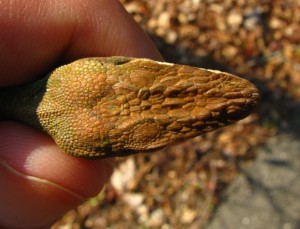An Eye Doctors New Niche-Third Eyes
Several species have remnants or actual third eyes present. While they may not be showing up at the optometrists office for trifocals, it is an area of interest to vision scientists.
A Third Eye Complete With a Cornea, Retina, Lens, and Rod Photoreceptors

Eye Picture of Third Eye
The tuatara is a lizard like creature found in New Zealand The tuatara grows up to 31 inches and has a third eye on the top of its head referred to as a parietal eye. The parietal eye is only visible in hatchlings and becomes covered within a few months. It probably functions in regulating the circadian (or night and day cycle) by influencing the production of melatonin, and also in thermoregulation (keeping the body at a constant temperature).
Other Three Eyed Creatures
Certain species of brine shrimp have three eye during their adult phase. (Artemia salina). Other examples are present.
In people, there are rare cases of three eyes present at birth. Usually these also have accompanying brain abnormalities. Cases have also been seen in cows, pigs, and a number of other animals. There was a girl born in India several years ago with three eyes and other duplicated facial features that was thought to be a reincarnation of a Hindu Deity.
From an optometrists viewpoint, three eyes would be great even if it meant very funny looking eyeglasses. Having two eyes allows stereopsis, the kind of 3D vision popularized by the movies like Avatar. While not the only type of depth perception, it is extremely useful for close depth discrimination of fine differences. Perhaps more importantly, the second eye is a spare to assure you won’t be blind if trauma or eye disease damages one eye. It would be great to have a third eye for an extra spare (then you could lose one and still see all the 3D movies! Until then, it is always smart to wear glasses or protective lenses for all sports and any environment that carries the risk of flying debris. Even if you don’t have an eye prescription for nearsightedness or astigmatism, it is the best preventative eye measure you can take.